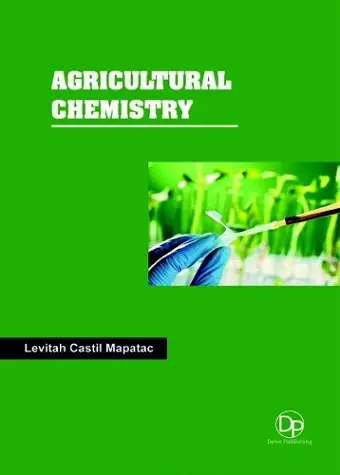Agricultural Chemistry
Format:Hardback
Publisher:Delve Publishing
Published:30th Nov '16
Should be back in stock very soon

Agricultural chemistry is the study of both chemistry and biochemistry which are important in agricultural production, the processing of raw products into foods and beverages, and in environmental monitoring and remediation. Agricultural chemistry often aims at preserving or increasing the fertility of soil, maintaining or improving the agricultural yield, and improving the quality of the crop. Carbon inputs from photosynthetic organisms ultimately provide the fuel for many soil organisms to grow and reproduce. Soil organisms, in turn, promote organic carbon degradation and catalyze the release of nutrients required for plant growth. The stability and productivity of agricultural ecosystems rely on efficient functioning of these and other processes, whereby carbon and nutrients such as nitrogen and phosphorus are recycled. Human-induced perturbations to the system, such as those that occur with pesticide or fertilizer application, alter ecosystem processes, sometimes with negative environmental consequences. Soil is the primary medium in which biological activity and chemical reactions occur. It is a three- phase system consisting of solid, liquid, and gas.
Approximately 50 percent of the volume in a typical agricultural soil is solid material classified chemically as either organic or inorganic compounds. Organic materials usually constitute 1 to 5 percent of the weight of the solid phase. The remainder of the soil volume is pore space that is either filled with gases such as CO2 and O2, or water. A wide variety of organisms live in soil, including microorganisms not visible to the naked eye such as bacteria, fungi, protozoa, some algae, and viruses. Bacteria are present in the largest numbers, but fungi produce more biomass per unit weight of soil than any other group of microorganisms. Much of agricultural chemistry as it relates to nutrient cycles, pesticide transformation, plant growth, and organic matter degradation involves the participation of microorganisms. Microorganisms produce both intracellular and extracellular enzymes that increase reaction rates, oxidize and reduce organic and inorganic compounds, and synthesize organic molecules that modify soil chemical and physical properties. Agricultural chemicals have an important role in land management and the production of food and fiber products, protecting plants from damage caused by insect pests, weeds or disease. In most cases, agricultural chemicals are referred to as `pesticides’ and include herbicides, fungicides, insecticides and pest animal baits.
ISBN: 9781680957211
Dimensions: unknown
Weight: unknown
276 pages